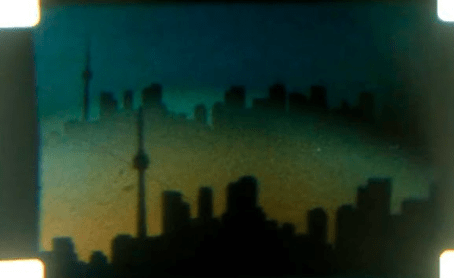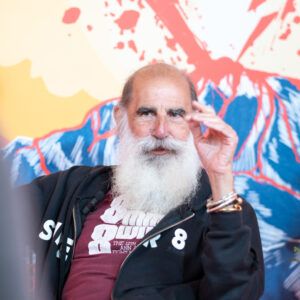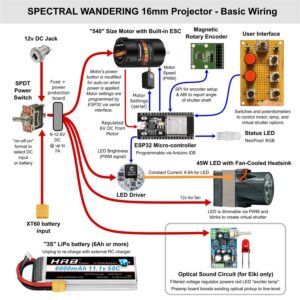- In the last invitation from BAICC, the International Artistic Residency for Cinematographic Creation promoted by (S8) together with AC/E and LIFT, the chosen project was the one by Laura Moreno Bueno, The sound of images. At the beginning of 2022 she travelled to Toronto to work at the LIFT facilities (Liaison of Independent Filmmakers of Toronto), in what was to become the discovery of a city. That discovery was marked by her idea of translating her images filmed in 16mm into sounds thanks to work with photosensitive microphones on the projection screen. It was a process full of discoveries, and whose strictly formal application is not at odds with the sensitive impressions of the travel journal that Moreno Bueno has created. We talked about all of this with her.

How did the idea for the project you presented to BAICC come about? Had you already worked bringing together analogue cinema and sound?
It came about as the result of several lines that finally drew together. The idea was to encode and decode elements from one medium of perception to another; in this case image and sound, sight and hearing. It was an attempt to find another way to play with film and sound that distanced itself a little from experimentation with optical sound. And lastly, it meant combining two small passions. I don’t really have any idea about music, but I’m passionate about it, and this was a way of approaching it through something I handle a little better: the image. So it’s a bit of a dream come true, because I hadn’t really played around much before with analogue and sound, much less live.
When you got down to work, what unexpected things did you come across in the process? What discoveries stimulated you the most?
Gosh, every day there was something unexpected. A lot of the things I have done in this piece I was trying out for the first time, so everything was a discovery for me. The truth is that it has been quite a challenge, but very, very enriching and curious. I thought I was not going to be able to synchronise two analogue screens that were switching on and off, but in the end that was almost the easiest thing. “Preparing” the sound for the projection was something impossible that I had to give up on… I really didn’t know the huge difference there is in projecting the same image with different projectors, analogue and digital. The light’s journey changes completely, creating different sounds every time. There are images that you think are going to sound one way and in the end they are completely different, and even more so on celluloid where the light never stops changing. Manual development always throws up surprises and the stains, fogging or glitches that appear really do make sound, which is something that never ceases to amaze me!
How did you set out the final montage of the work that you are going to present? We know it’s two screens, and I imagine there will be a “movie” on each of the projectors.
It started to emerge a bit as I went along, but there were things that were clear to me. I knew it was going to be something more sensitive than narrative, due to the mere fact of uniting hearing and sight. It was also clear to me that I wanted to play with two screens to create some disorientation for one’s sight, but not for one’s hearing. Because you can listen to sounds regardless of where they come from, but you can only look at one place at a time. So the idea was to have the screens facing each other so your body would have to turn to find the image, but it left you quite dazed and the images really do have a dialogue with each other, so it was a shame to separate them. So I decided to put them together a bit. The rest appeared as I went along, but always bearing in mind how all the elements in the montage were going to be arranged.





